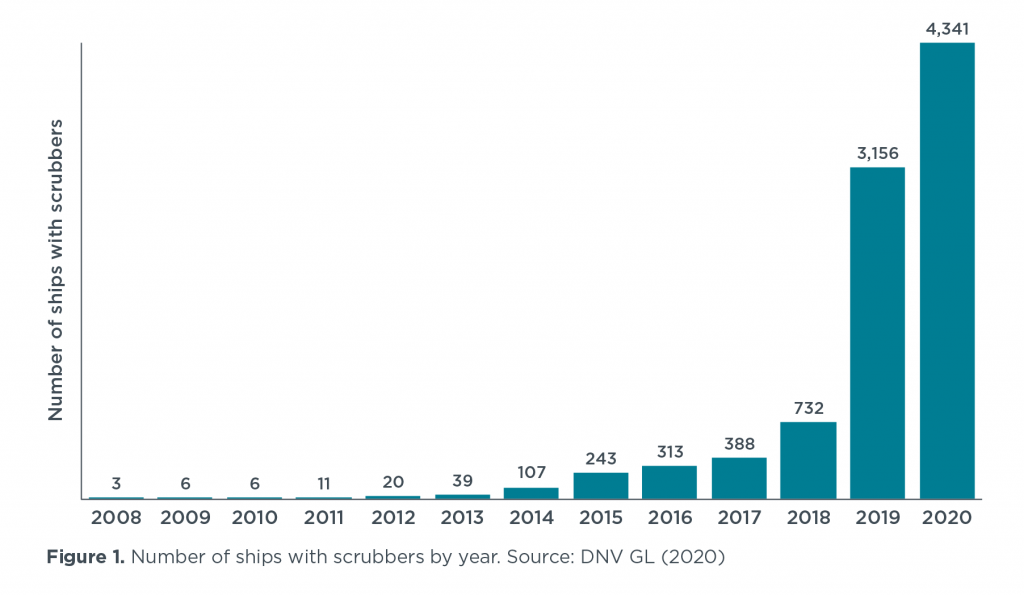November 24, 2020
The number of ships using exhaust gas cleaning systems, better known as "scrubbers", has grown from just three ships in 2008 to more than 4,300 in 2020. Although scrubbers are effective in reducing sulfur dioxide emissions ( SO2) in the air, sulfur and other pollutants removed from exhaust gases - including carcinogens such as polycyclic aromatic hydrocarbons (PAHs) and heavy metals - are dumped overboard as wash water, also called flush water . Meanwhile, the International Maritime Organization (IMO) guidelines for scrubber discharges have not been strengthened since 2008, despite being revised in 2009, 2015 and 2020, and the guidelines ignore the cumulative effects of many ships operating and unload in high traffic areas. These cumulative effects are to be expected, given the rapid increase in the number of ships with scrubbers.

This study estimates the emission factors to air and water from ships using heavy fuel oil (HFO) with scrubbers, based on the available literature and the methods of the Fourth IMO Greenhouse Gas Study. . Furthermore, the authors compare the emissions associated with ships using scrubbers with those of ships without scrubbers using marine gas oil (MGO).
With regard to atmospheric emissions, the results show:
The SO2 emissions from ships using HFO with 2.6% of sulfur with a scrubbers are, on average, 31% lower than those of ships using MGO with 0.07% of sulfur.
Particulate emissions are almost 70% higher using HFO with a scrubbers compared to MGO.
Black carbon emissions are 81% higher using HFO with a scrubber than using MGO in a medium speed diesel engine and more than 4.5 times higher than using MGO in a slow speed diesel engine.
Therefore, scrubbers are not as effective in reducing total air pollution emissions compared to using MGO. Furthermore, direct carbon dioxide (CO2) emissions are 4% higher using HFO with a scrubbers compared to MGO, and although HFO has lower emissions than MGO, the extra fuel consumption associated with feeding the scrubbers gives resulting in 1.1% more CO2 emissions in the life cycle when using HFO.
Regarding water emissions, the study finds:
Discharges from scrubbers usually meet IMO guidelines, but all scrubbers - open loop, closed loop, and hybrid discharge - are more acidic and turbid than the surrounding water. This contributes to ocean acidification and worsens the quality of the water.
All scrubbers emit nitrates, PAHs and heavy metals that accumulate in the environment and in the food web and can negatively affect both water quality and marine life.
PAHs and heavy metals have been linked to cancers and reproductive disorders in threatened and endangered marine mammals, including southern resident killer whales and belugas.
In light of these findings, the ICCT recommends that individual governments continue to take unilateral action to restrict or prohibit scrubber discharges from both open-loop and closed-loop systems. This could include an immediate ban on scrubber discharges in ports, inland waters and territorial seas. At the international level, IMO should consider banning the use of scrubbers on newly built ships and phasing out scrubbers on existing ships, because scrubbers are not equally effective in reducing air pollution compared to normal use. of fuels with lower sulfur content.
Study access:

